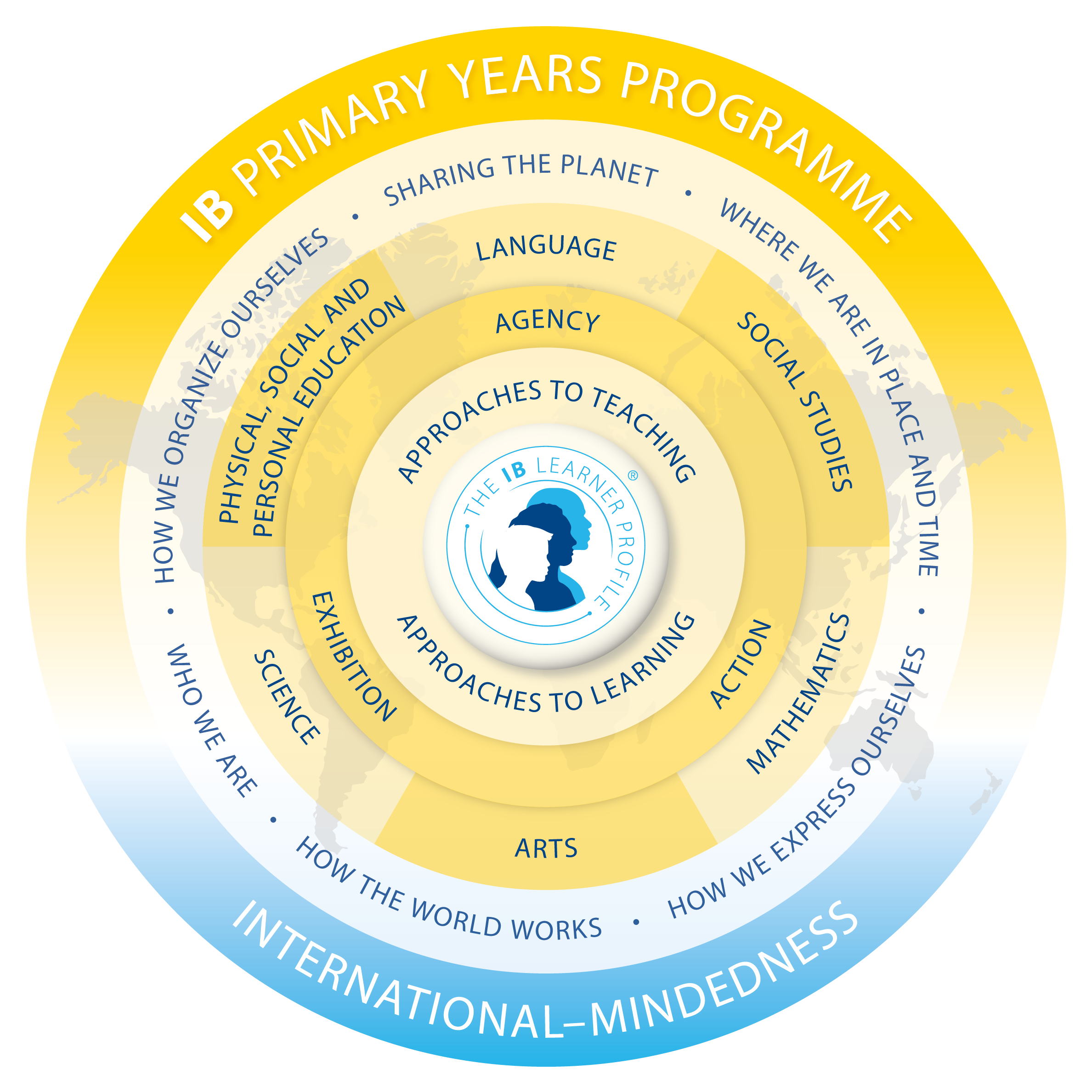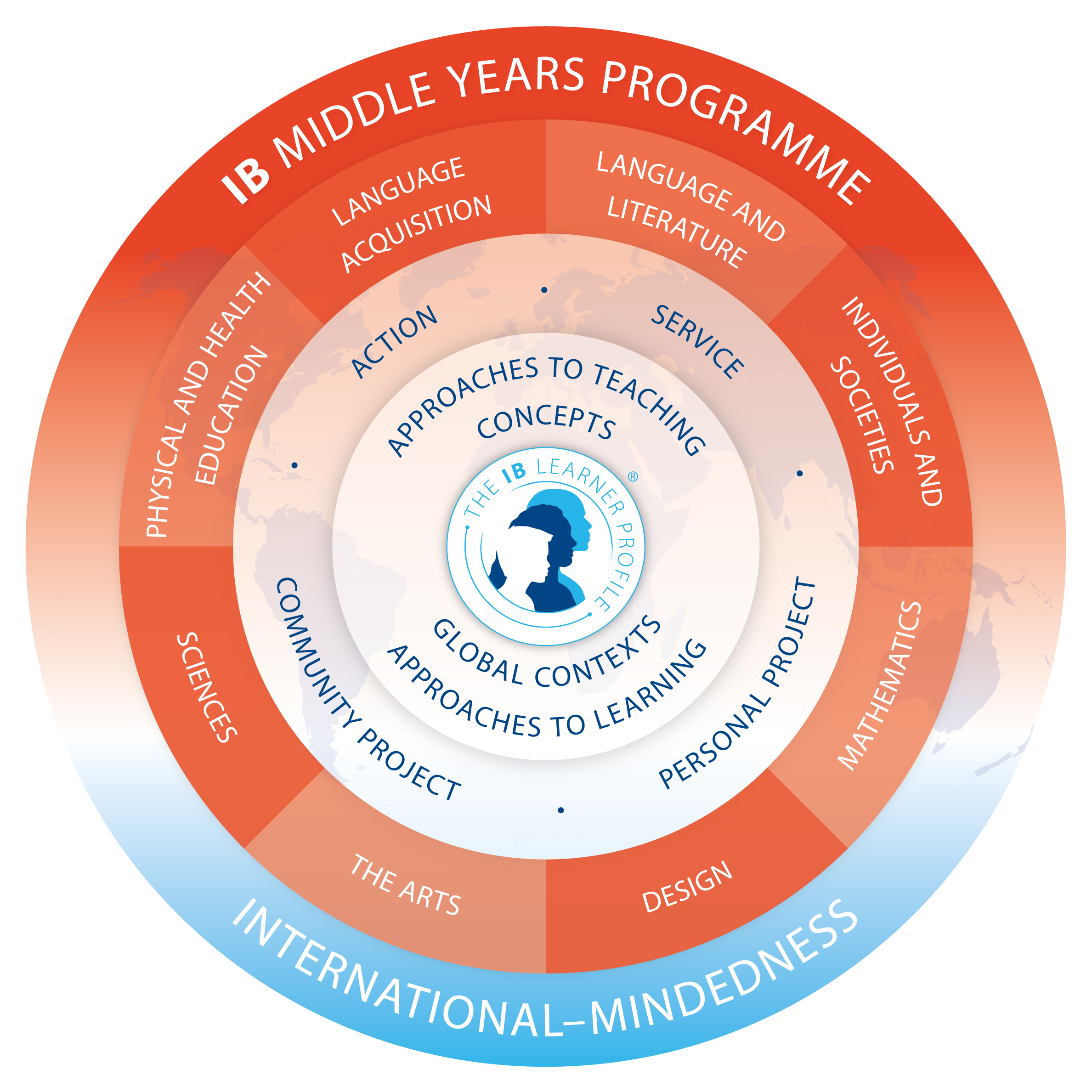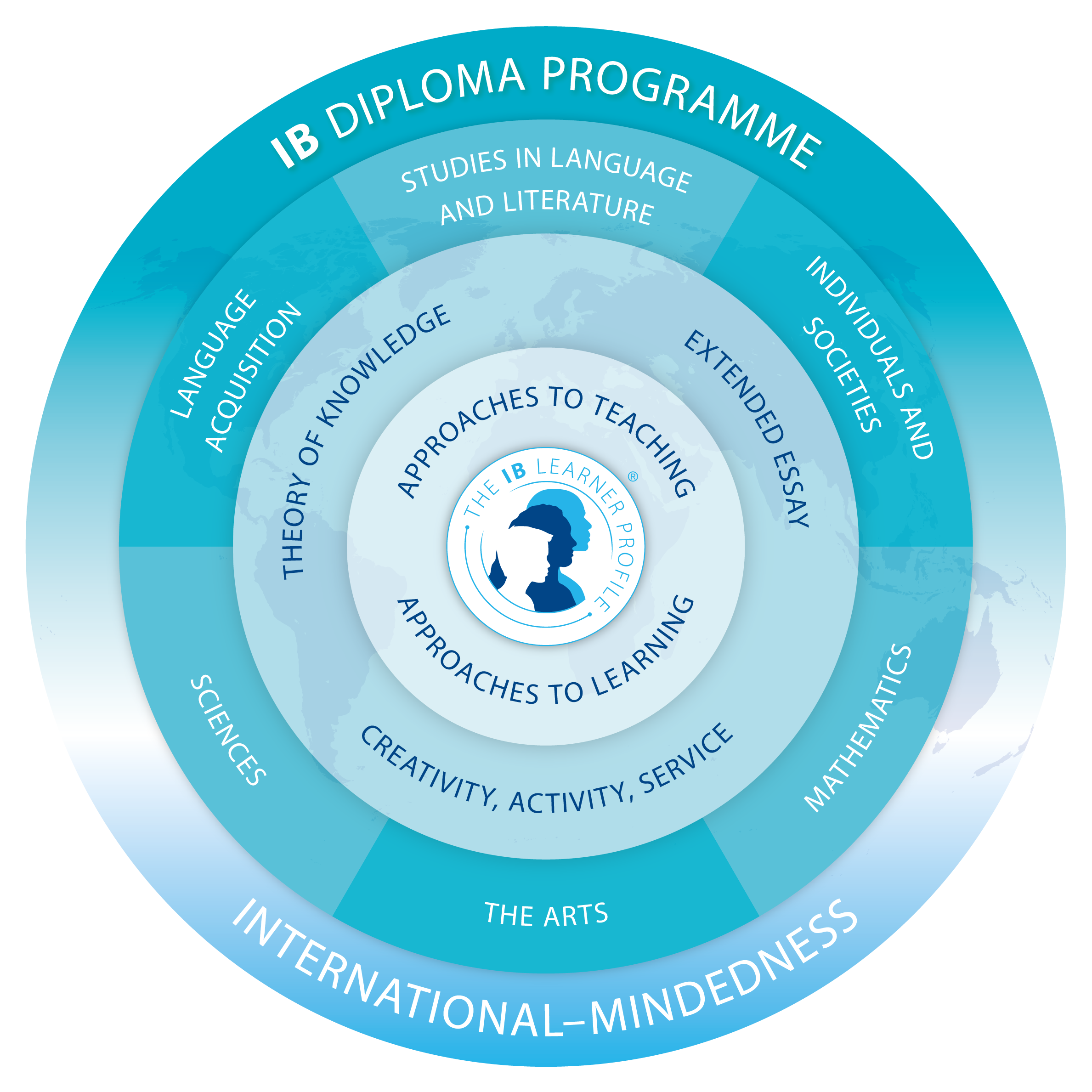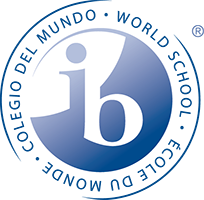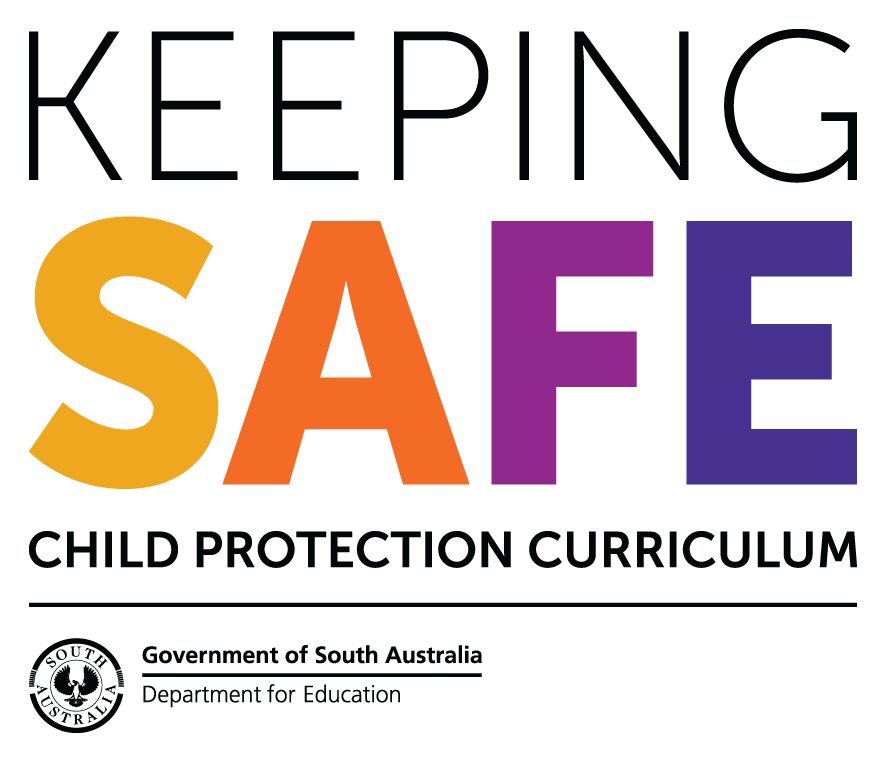MYP Global Contexts
Teaching and learning in the MYP involves understanding concepts in context. Global contexts provide a common language for powerful contextual learning, identifying specific settings, events or circumstances that provide more concrete perspectives for teaching and learning. When teachers select a global context for learning, they are answering the following questions.
- Why are we engaged in this inquiry?
- Why are these concepts important?
- Why is it important for me to understand?
- Why do people care about this topic?
MYP global contexts, illustrated in figure above, provide common points of entry for inquiries into what it means to be internationally minded, framing a curriculum that promotes multilingualism, intercultural understanding and global engagement. These contexts build on the powerful themes of global significance that structure teaching and learning in the PYP, creating relevance for adolescent learners.
The selected global context will inform the questions that teachers and students ask throughout the unit. However, many explorations of global contexts are closely related and, in the course of the unit, questions that relate to other global contexts may also be encouraged, developed and considered.These and other contexts for teaching and learning inspire explorations of our common humanity and shared guardianship of the planet. They invite reflection on local, national and global communities, as well as the real-life issues and concerns of 11- to 16-year-old students. For each MYP unit, teachers will identify one global context that establishes a focus for meaningful teaching and learning in a programme of international education. Over the course of their study, students will encounter all six global contexts.
Inquiring into subject content through a global context enables students to develop a deeper understanding of both the subject and its application in the real world. Repeated cycles of inquiry, action and reflection can lead students from academic knowledge towards practical understanding, developing positive attitudes towards learning as well as a sense of personal and social responsibility.
Assessment and Reporting of Student Learning in the MYP
Assessment Principles and Methods
Assessment is for the most part a multi-faceted tool which helps drive the learning process. It is used by teachers to make regular judgements about the effectiveness of both the teaching and learning in progress, by giving an idea of levels of student performance at given times or in particular knowledge / skill etc. areas, and helping teachers and students identify how and where further progress might be made. The vast majority of assessment carried out at TISA is designed for this purpose and does not constitute an end in itself – something which is important to remember when considering grades or scores on work and reports. The learning process is a journey, and assessment is designed to play an important role in guiding students forward towards the next stages of progress.
Assessment methods used in the course of teaching and learning within the MYP years are many and varied, and may be formal or informal; formative or summative; and include written, oral, group, peer, or self-assessments. It is worth noting too the emphasis placed by the IB on the assessment of process, whereby focus is directed “less on the actual result or product than on the thought processes leading to the desired outcome” (MYP subject guides). In such assessment, the feedback may be qualitative rather than quantitive – i.e. comprising comments and advice rather than a grade or numerical score. Focusing on the process as much as (or more than) on the final result or product helps students further develop strategies for learning.
Criterion-referencing assessment
The MYP assessment is criterion-related, as it is based upon pre-determined criteria that all students should have access to. The MYP identifies a set of objectives for each subject group, which are directly related to the assessment criteria of that particular subject group. The level of student success in reaching the objectives of each subject group is measured in terms of levels of achievement described in each assessment criterion.
Apart from specifying what the criteria should be for each subject, the IB also publishes written descriptions for each criterion. These help students to understand what each criterion means, and what the specific aspects of knowledge, understanding and skills actually are which they need to acquire in order to learn and progress within each criterion for a subject – and hence within the subject as a whole.
Grading within a Criterion-referencing System
The IB does not only specify the criteria against which performance in each subject should be measured, but it further allots a certain number of maximum marks for each criterion, and a certain number of levels a student might achieve within it.
The performance required to reach each mark level in a criterion is indicated by its accompanying written descriptors, rubrics. Teachers therefore consult these to ascertain which best describes a student’s performance in that criterion, and the mark will be given according to the level the student is deemed to have achieved. Using rubrics will be very helpful to students in achieving success in the MYP.
From individual criterion scores to an overall 1 to 7 subject grade
Final grades for a subject, as awarded on end of term report are given on the 1 to 7 scale used throughout IB programmes. This grade reflects their overall performance and level in that subject during the term or year.
Please note that Grades 1 and 2 are considered to be ‘failing’ grades.
The IB’s published General Grade Descriptors, outlining what a student’s performance in any subject should generally look like, are as follows:
| Grade | Boundary guidelines | Descriptor |
| 1 | 1-5 | Produces work of very limited quality. Conveys many significant misunderstandings or lacks understanding of most concepts and contexts. Very rarely demonstrates critical or creative thinking. Very inflexible, rarely using knowledge or skills. |
| 2 | 6-9 | Produces work of limited quality. Expresses misunderstandings or significant gaps in understanding for many concepts and contexts. Infrequently demonstrates critical or creative thinking. Generally inflexible in the use of knowledge and skills, infrequently applying knowledge and skills. |
| 3 | 10-14 | Produces work of an acceptable quality. Communicates basic understanding of many concepts and contexts, with occasionally significant misunderstandings or gaps. Begins to demonstrate some basic critical and creative thinking. Is often inflexible in the use of knowledge and skills, requiring support even in familiar classroom situations. |
| 4 | 15-18 | Produces good-quality work. Communicates basic understanding of most concepts and contexts with few misunderstandings and minor gaps. Often demonstrates basic critical and creative thinking. Uses knowledge and skills with some flexibility in familiar classroom situations, but requires support in unfamiliar situations. |
| 5 | 19-23 | Produces generally high-quality work. Communicates secure understanding of concepts and contexts. Demonstrates critical and creative thinking, sometimes with sophistication. Uses knowledge and skills in familiar classroom and real-world situations and, with support, some unfamiliar real-world situations |
| 6 | 24-27 | Produces high-quality, frequently innovative work. Communicates comprehensive, nuanced understanding of concepts and contexts. Consistently demonstrates sophisticated critical and creative thinking. Frequently transfers knowledge and skills with independence and expertise in a variety of complex classroom and real-world situations. |
| 7 | 28-32 | Produces high-quality, frequently innovative work. Communicates comprehensive, nuanced understanding of concepts and contexts. Consistently demonstrates sophisticated critical and creative thinking. Frequently transfers knowledge and skills with independence and expertise in a variety of complex classroom and real-world situations. |
TISA Results
The M5 students of 2015 continued TISA’s record of scoring higher than the world average. TISA M5’s secured an average 50 points out of a possible 63. Our highest score for the year was 62 points.
21 moderation samples, representing each of the Language Acquisition languages and phases, Language and Literature courses in Russian and English all classes in the Arts, both levels in Mathematics, as well as Science, Humanities, Design and Physical and Health Education were submitted to the IB. Of these, 17 were, again, above the world average, often by a full point.
2015 was the final year in which the IB will offer moderation of student grades. TISA has participated in moderation since 2007; this participation has provided us with valuable information about our assessment procedures and our students’ results. We will continue to seek support from the IB in maintaining these high standards through monitoring of unit plans, which will replace moderation of assessment.
Success in the MYP has also shown to be an indicator of success in the Diploma Program. We look forward to seeing these students continue to excellent results in the IB Diploma Programme.
Welcome to the PYP at TISA. Our programme aims to develop internationally minded people who, recognizing their common humanity and shared guardianship of the planet, help create a better and more peaceful world.
The PYP curriculum at TISA is transdiciplinary and fully supports core subject areas including language, mathematics, science, social studies, the arts and physical education. At TISA, we provide students with a hands on curriculum that is significant, relevant and engaging.
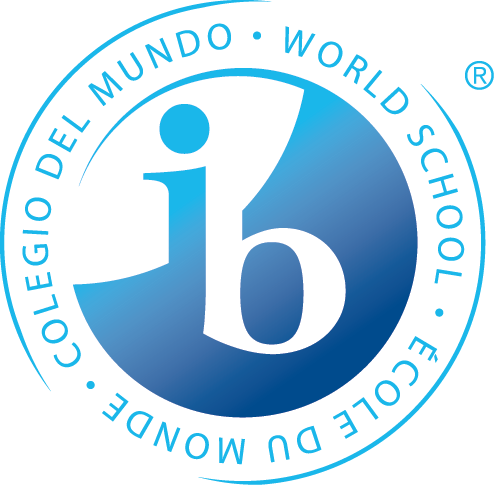
Education for a Better World
The International Baccalaureate aims to develop inquiring, knowledgeable and caring young people who help to create a better and more peaceful world through intercultural understanding and respect.
To this end, the organization works with schools, governments and international organizations to develop challenging programmes of international education and rigorous assessment.
These programmes encourage students across the world to become active, compassionate and lifelong learners who understand that other people, with their differences, can also be right.
IB Mission Statement
The International Baccalaureate was founded over 48 years with the aim of “creating a better, more peaceful world” through education. Today the IB is taught in 143 countries to more than 1,250,000 students. TISA is proud to be the most experienced IB school in Azerbaijan, having offered IB Primary Years and Middle Years Programmes since 1999 and the IB Diploma Programme since 2001.
Why choose an IB education for your child?
The IB Programmes are:
-
Holistic: The IB curriculum builds both character and academic skills, supporting your child from the ages of 3 to 19.
-
Research Based: An independent, not-for-profit organization, the IB curriculum responds directly to current educational research from a range of cultures around the world.
-
Authentic: All three programmes require that students act on what they learn outside of the classroom.
-
Challenging: Culminating in the widely recognized Diploma exams, the IB curriculum is learner-focused allowing teachers in all three programmes to differentiate and stretch students to their potential.
-
International: International-mindedness is at the heart of all three programmes, helping students to become confident in their own culture by appreciating and respecting the cultures of others.

